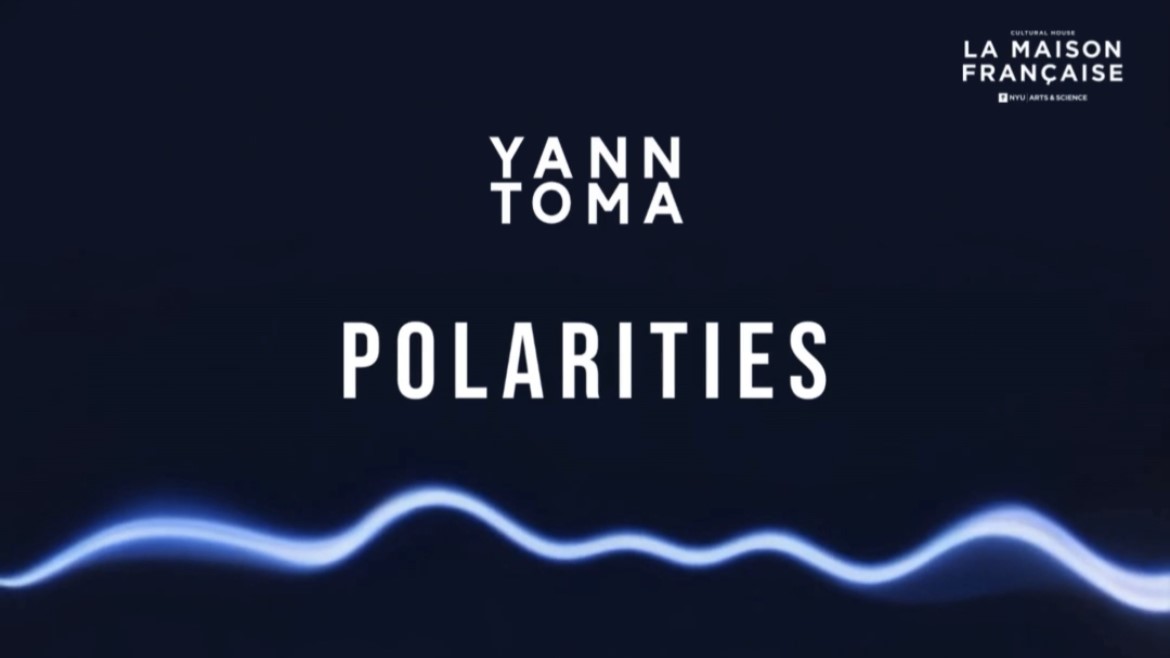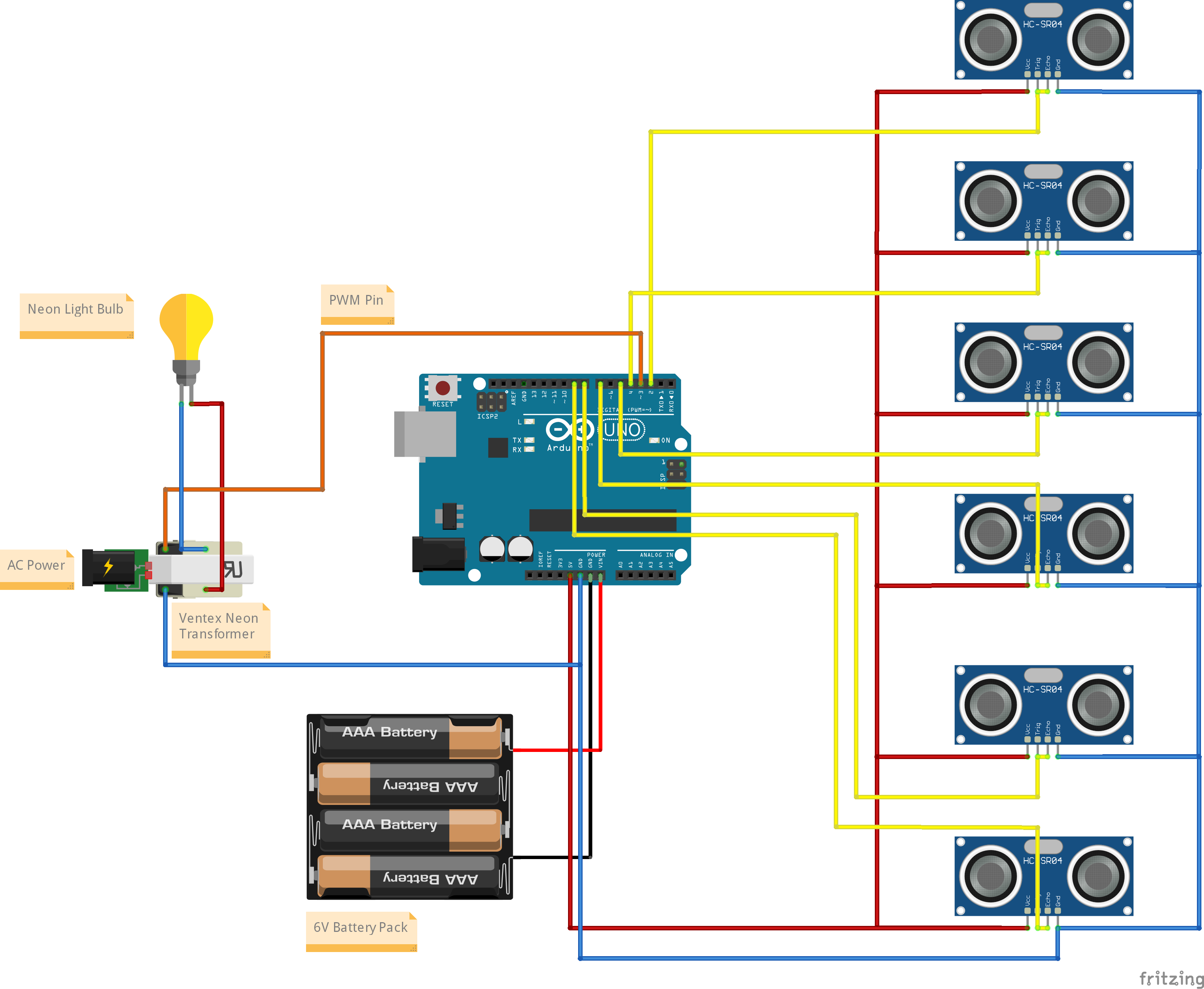Polarities

My role: Physical Designer, Interaction Designer
Polarities engage through a glass sculpture filled with a gas subjected to a bombardment of electrons, forces assumed by the artist to be complementary and placed at each end of the work, reacting sensitively to the audience’s presence.
Powered by light and physical engagement, the installation evolves and shapeshifts in response to audience interaction, creating a seamless fusion of artwork and viewer experience.
https://www.nyu.edu/about/news-publications/news/2024/may/yann-toma--an-artist-in-residence-at-la-maison-francaise-of-nyu-.html




Technical Documentation
This installation responds to the viewer's proximity by brightening the neon light as they approach and dimming it as they move away. Simultaneously, the audio’s volume, tone, and frequency shift based on the viewer's distance from the light.
To ensure detection from all directions, six ultrasonic sensors are positioned around the setup. The system compares data from each sensor to determine the minimum value, representing the closest object. This value controls the PWM signal through a transformer, adjusting the neon light's brightness.
Since ultrasonic sensors can struggle to detect soft materials like clothing, their readings often fluctuate. To stabilize the output and prevent flickering, the system calculates the median of seven consecutive minimum readings. This smoothed value is then sent via serial communication to Max/MSP, dynamically controlling the audio in real time.

Breadboard view of an Arduino Uno connected to six HC-SR04
Ultrasonic sensors. The ground pins of the six ultrasonic sensors are wired in parallel
and connected to the GND pin of Arduino. The power (VCC) pins of the sensors are
wired in parallel and connected to the 5V pin of Arduino. Trig and Echo pins of
each sensor are connected to one another, thanks to the New Ping Library that
allows both Trig and Echo pin to be connected to one digital pin on an Arduino.
In the graph above, from top to bottom, Trig and Echo pins from each sensor are
connected to digital pin 2, 4, 5, 7, 8, 9 on Arduino Uno. Arduino Uno is
powered by a 6V battery pack that is connected to the VIN and GND pin on the Arduino.
Arduino Uno can be alternatively powered directly by a DC barrel jack for a permanent
installation.
Two ends of the Neon Light Bulb are connected to a Neon Transformer (Ventex VT5520) that is plugged into an AC outlet. The PWM control pin from the transformer is connected to digital pin 3 on the Arduino and the ground pin connected to the GND pin of Arduino.
Two ends of the Neon Light Bulb are connected to a Neon Transformer (Ventex VT5520) that is plugged into an AC outlet. The PWM control pin from the transformer is connected to digital pin 3 on the Arduino and the ground pin connected to the GND pin of Arduino.

